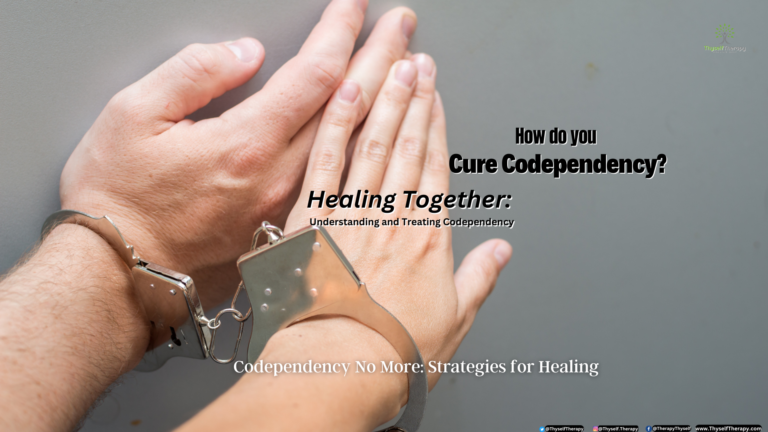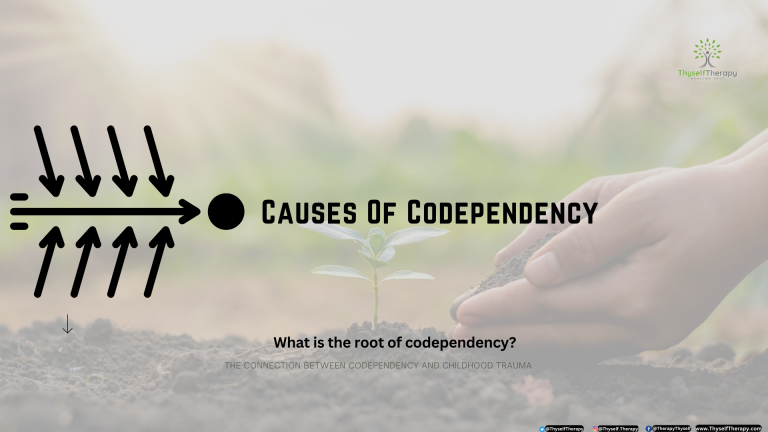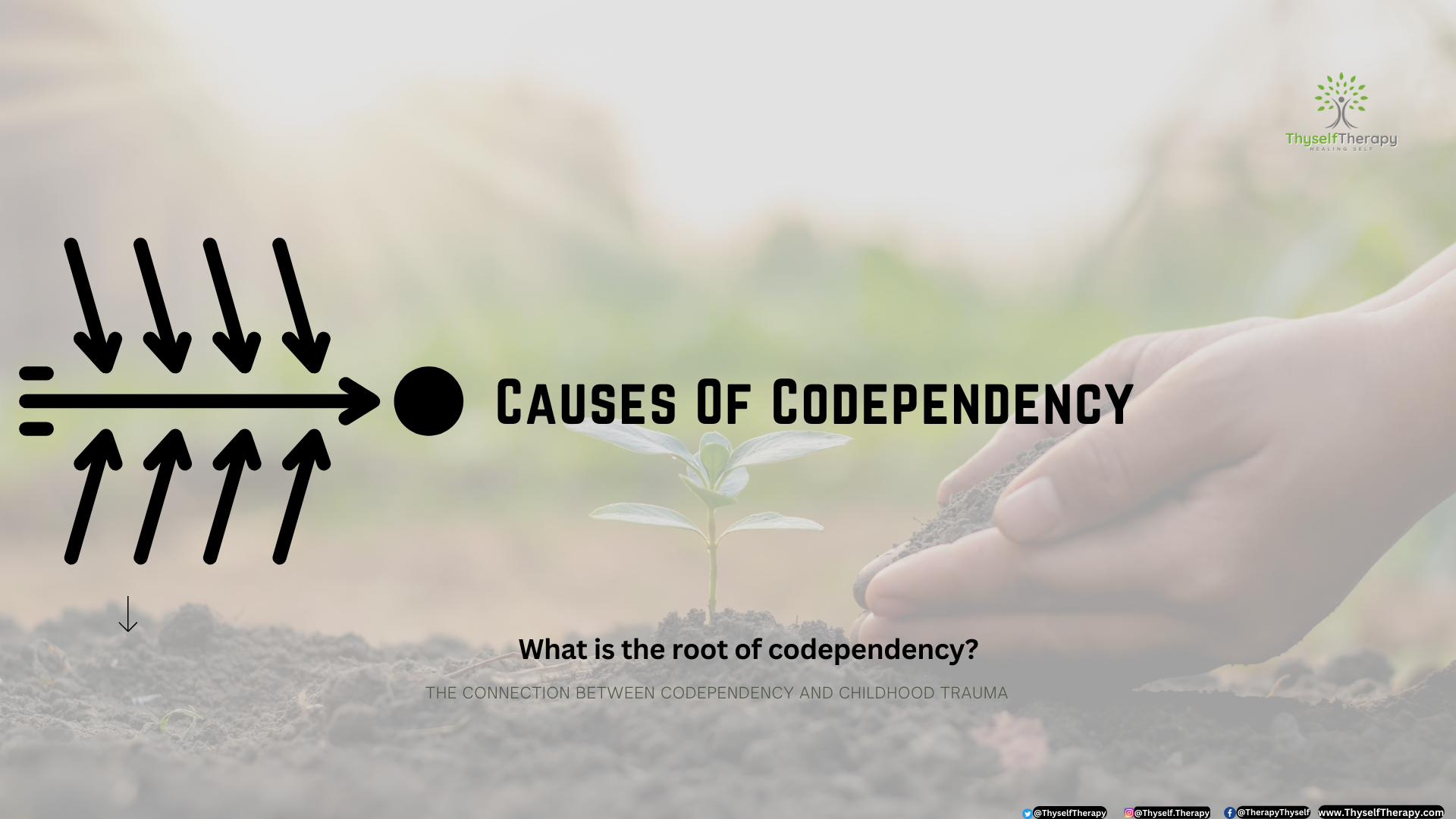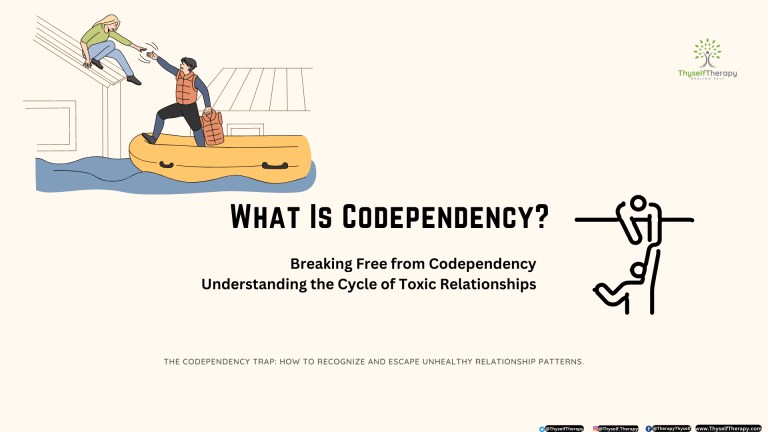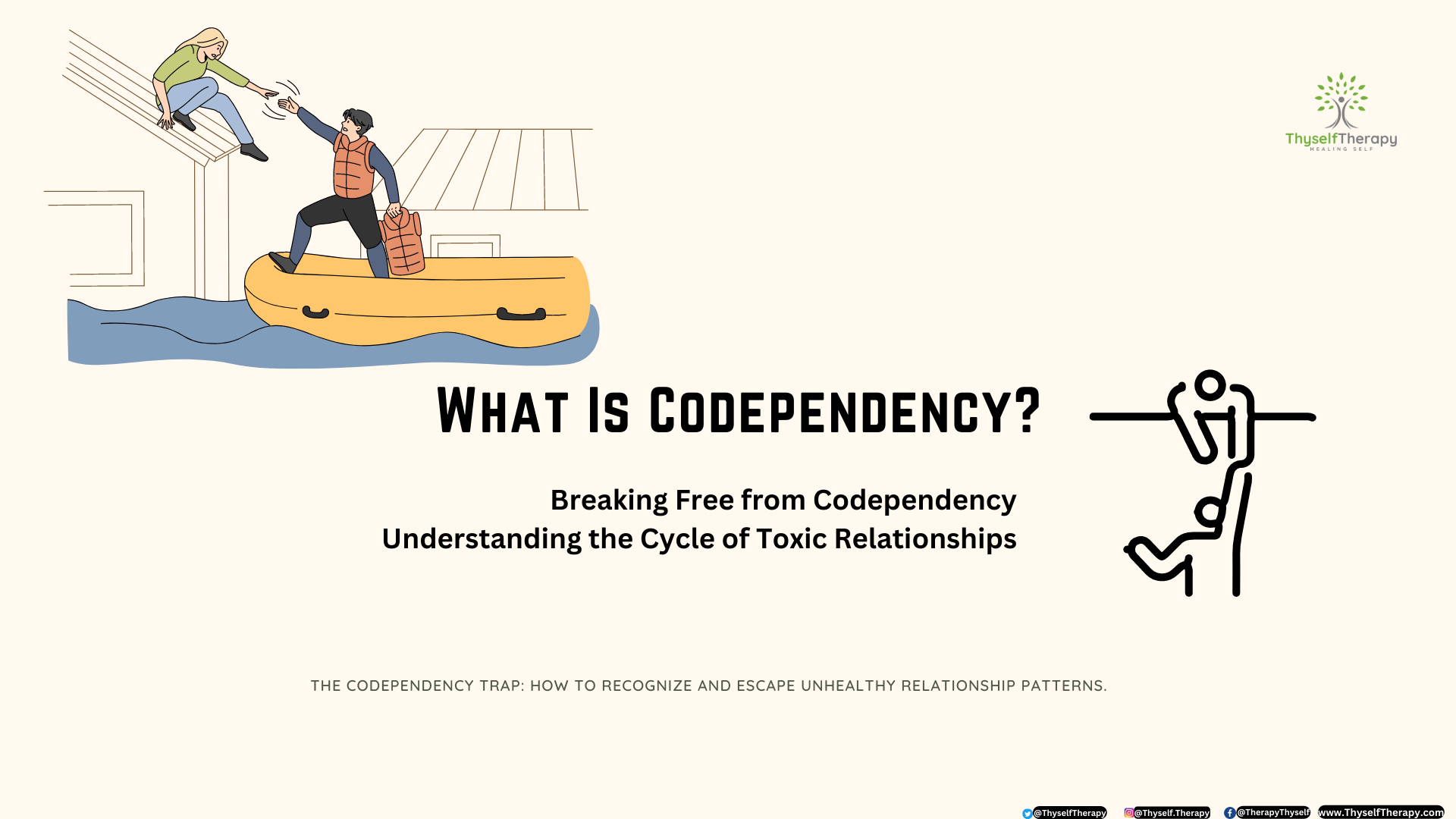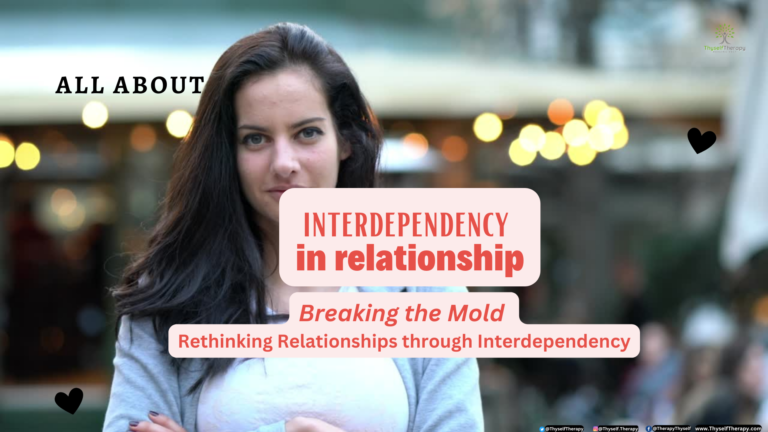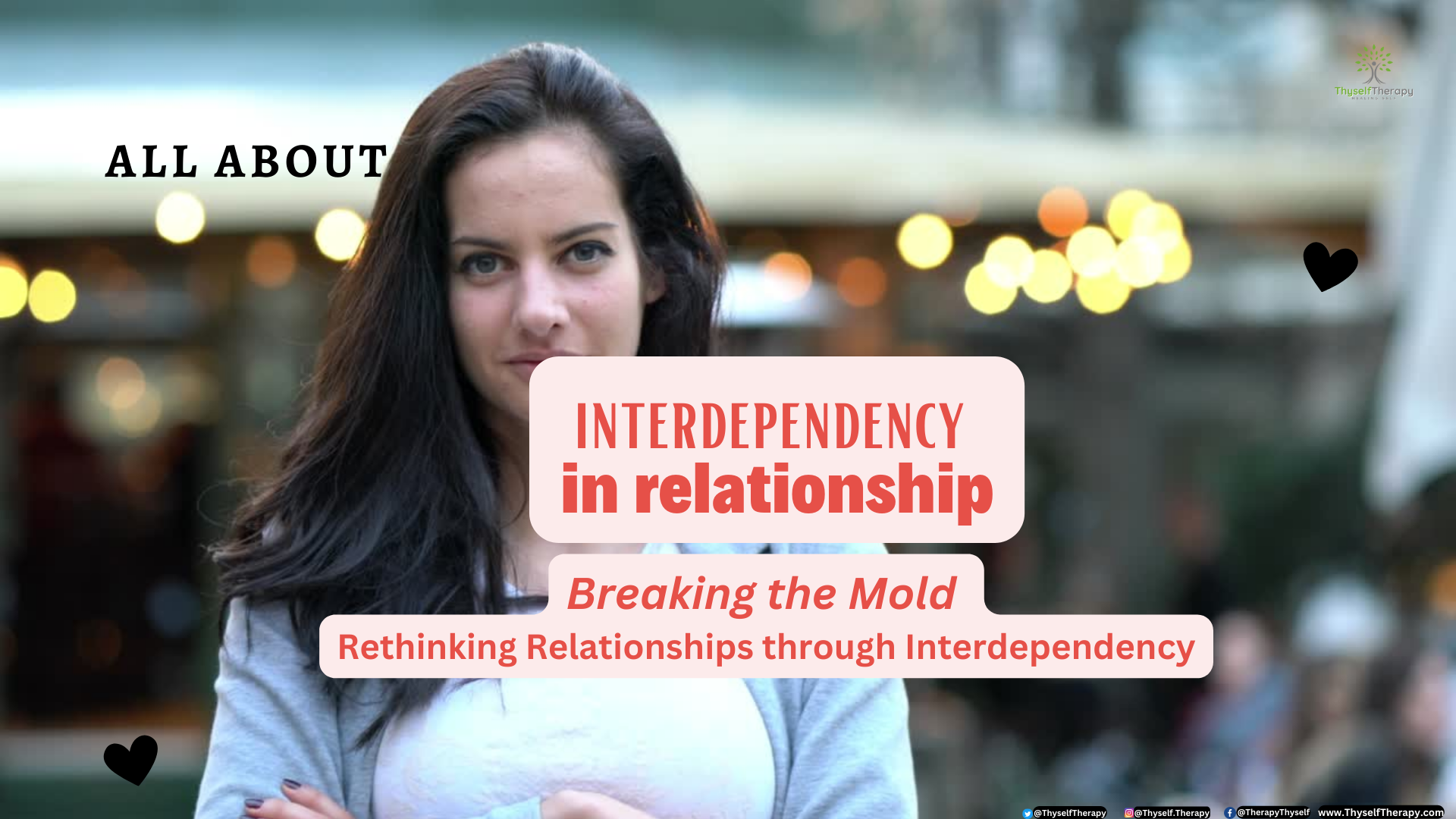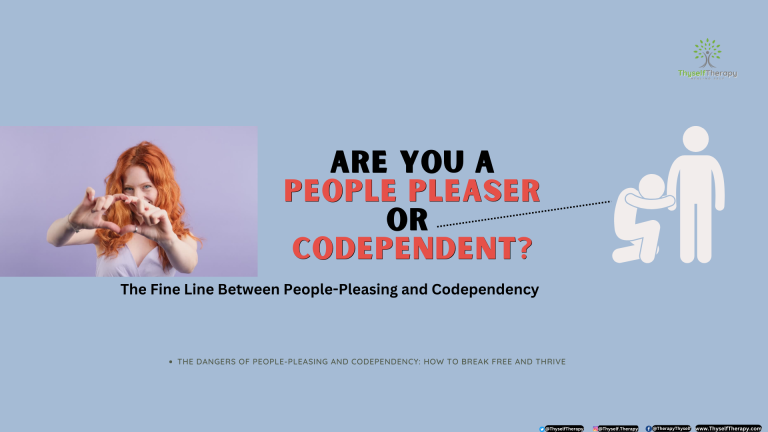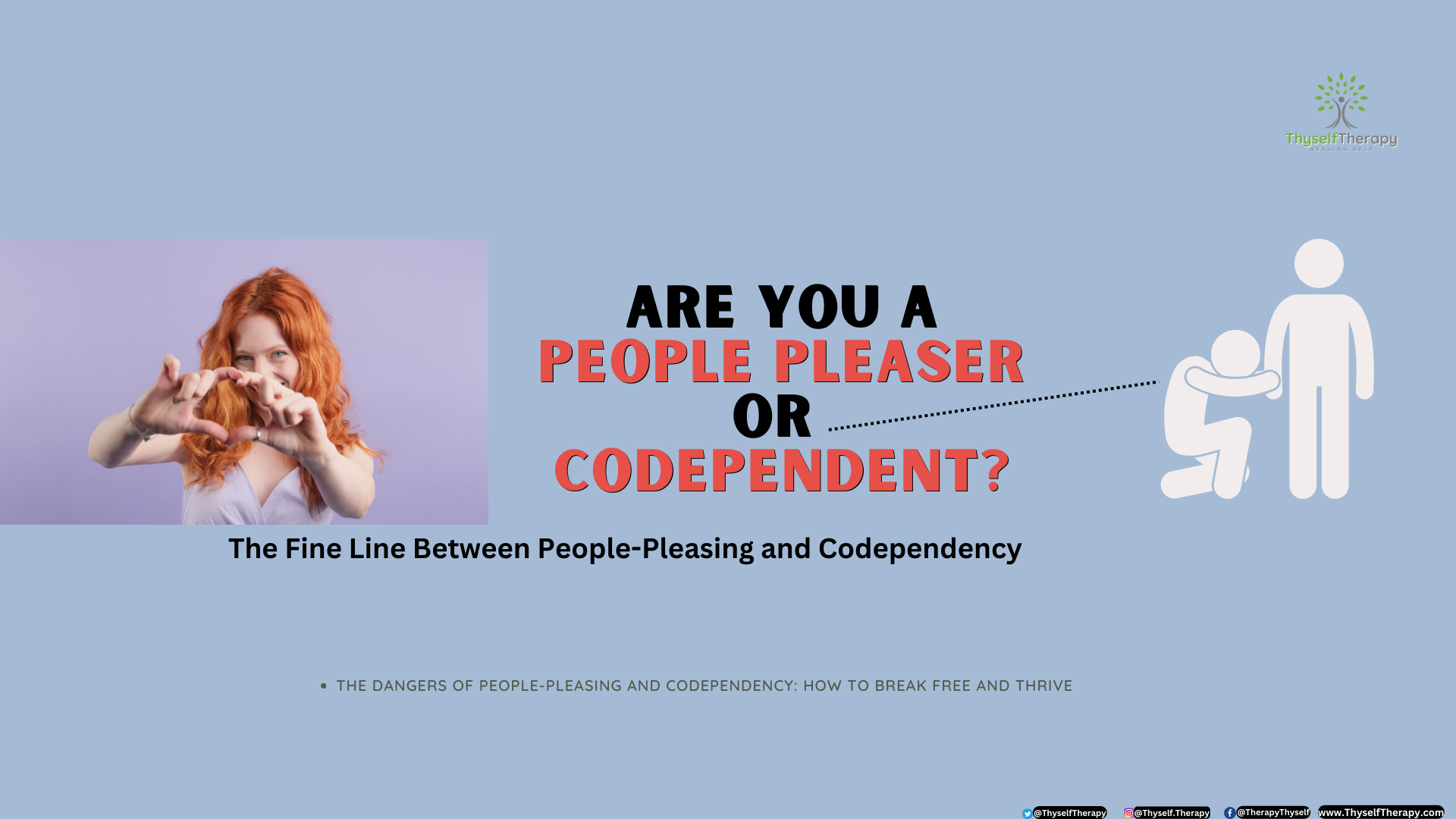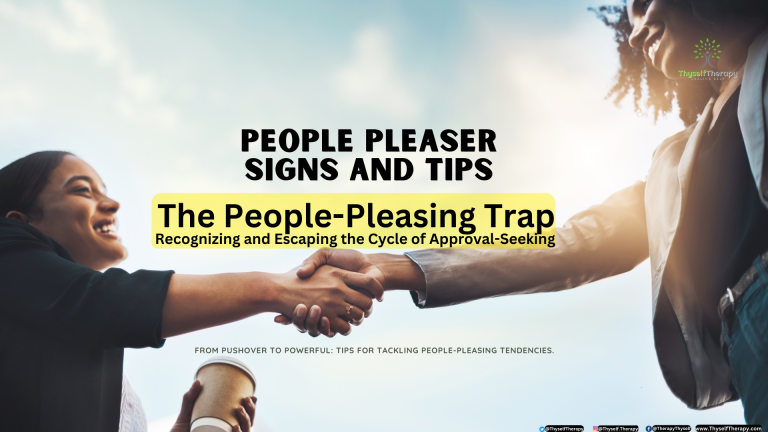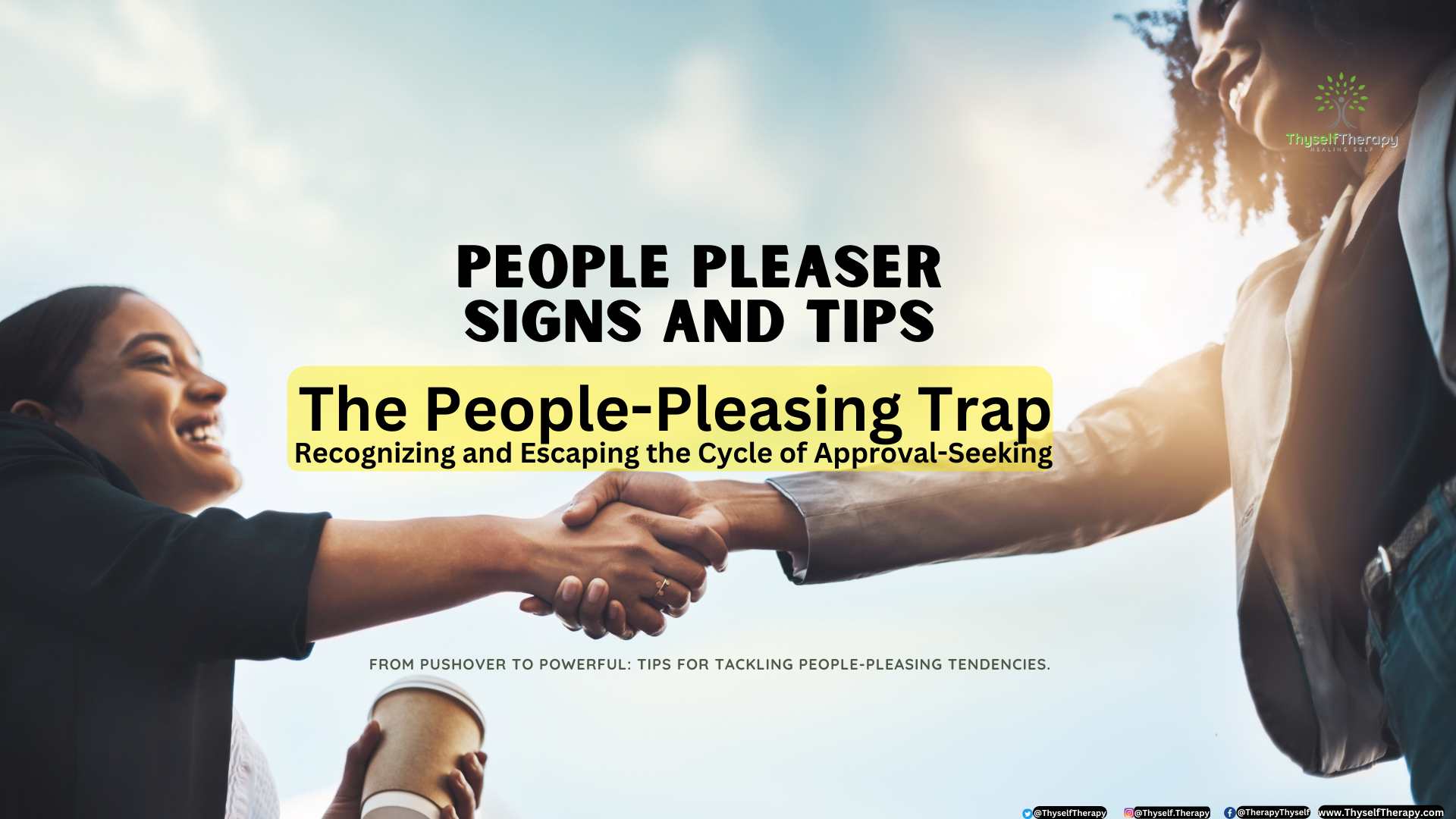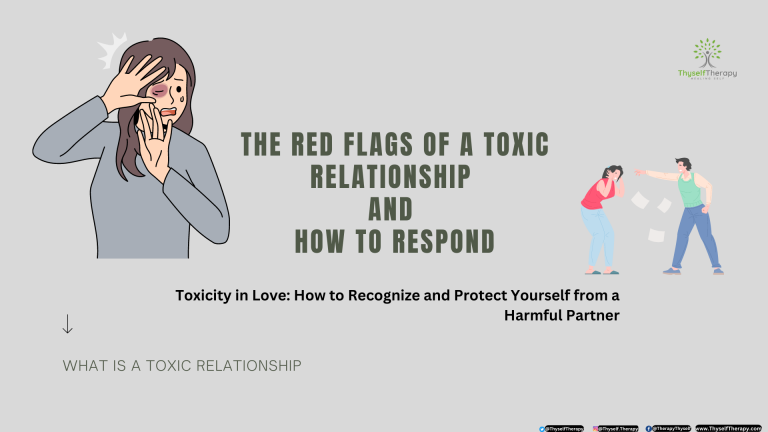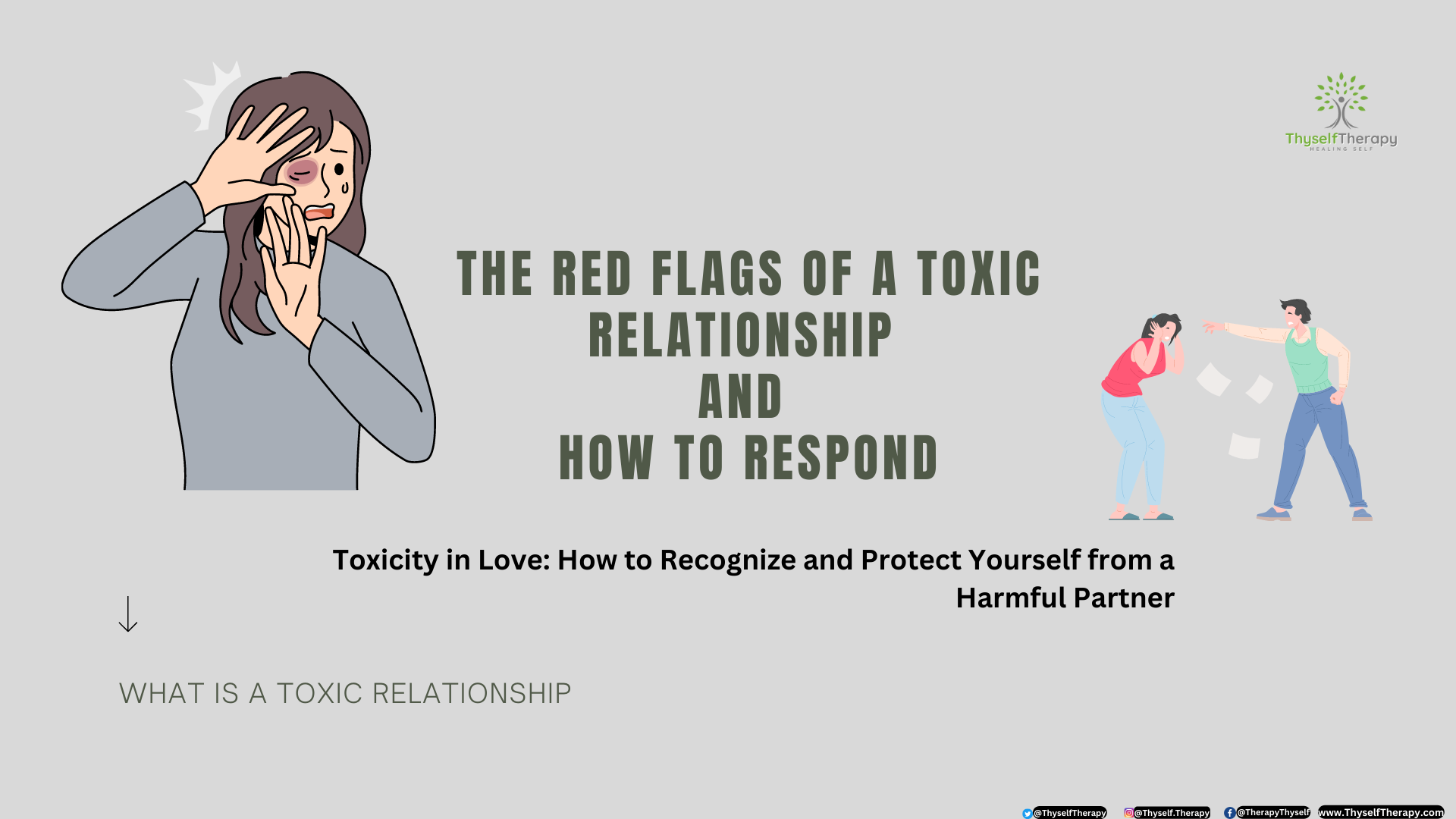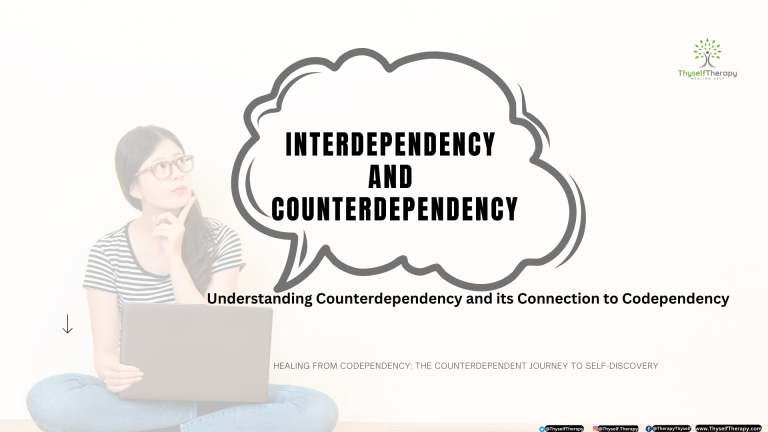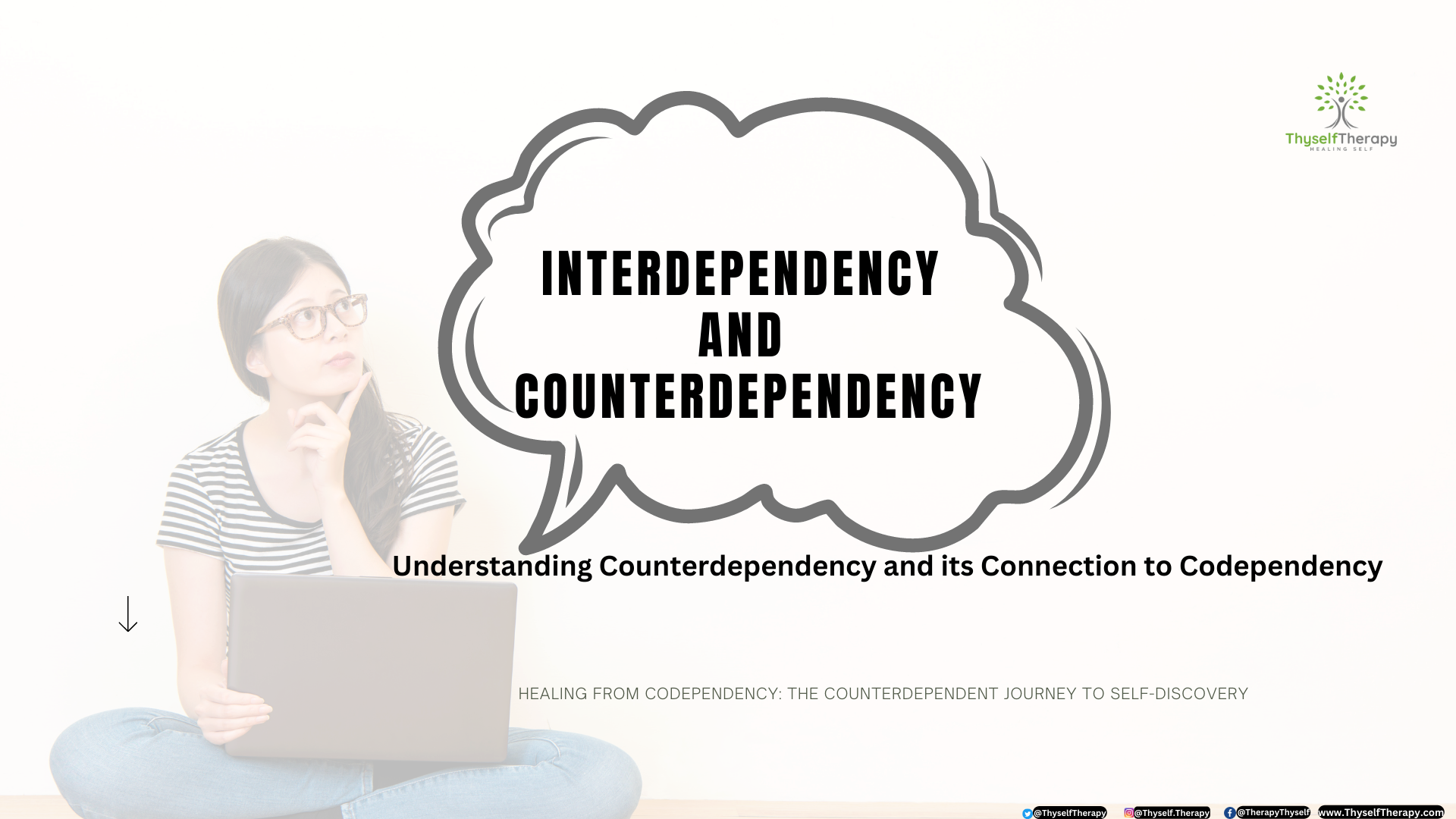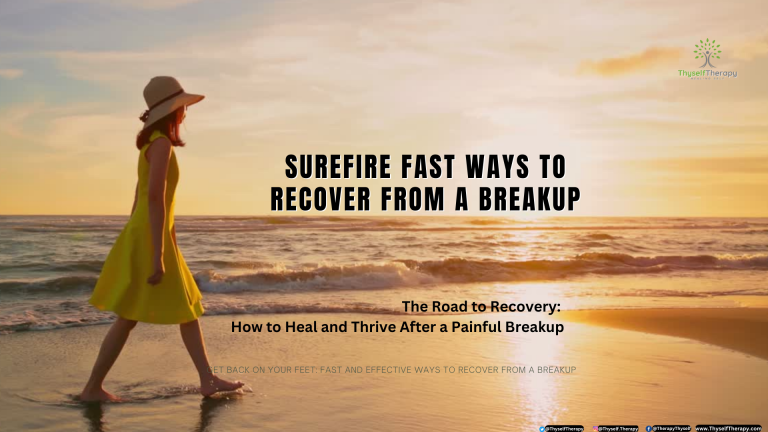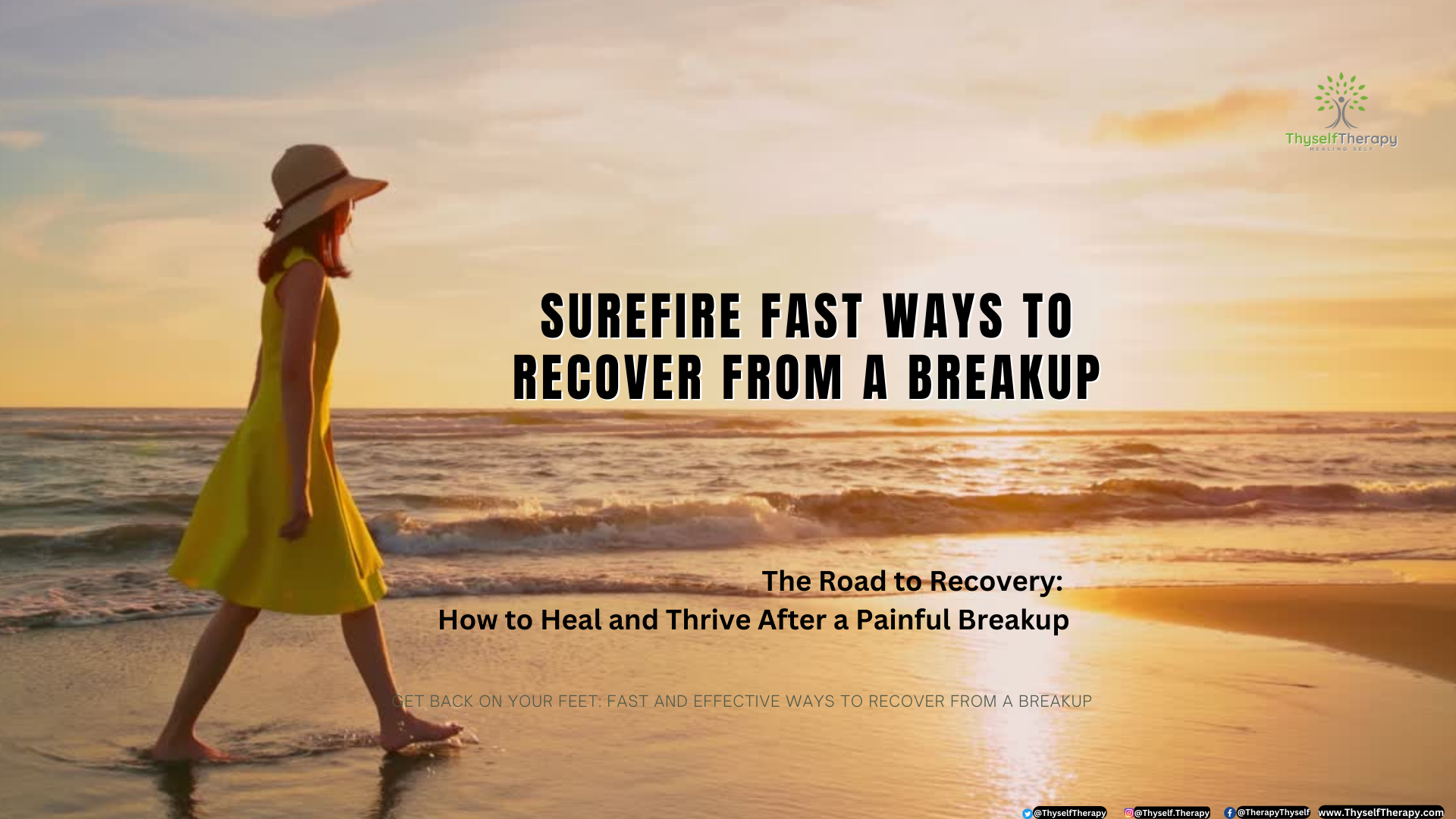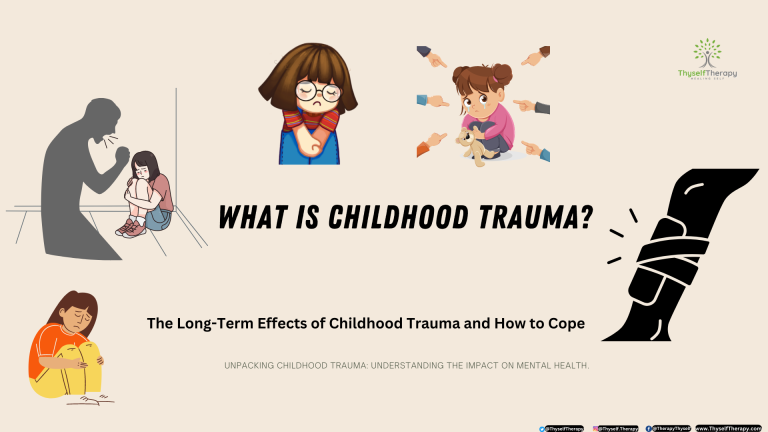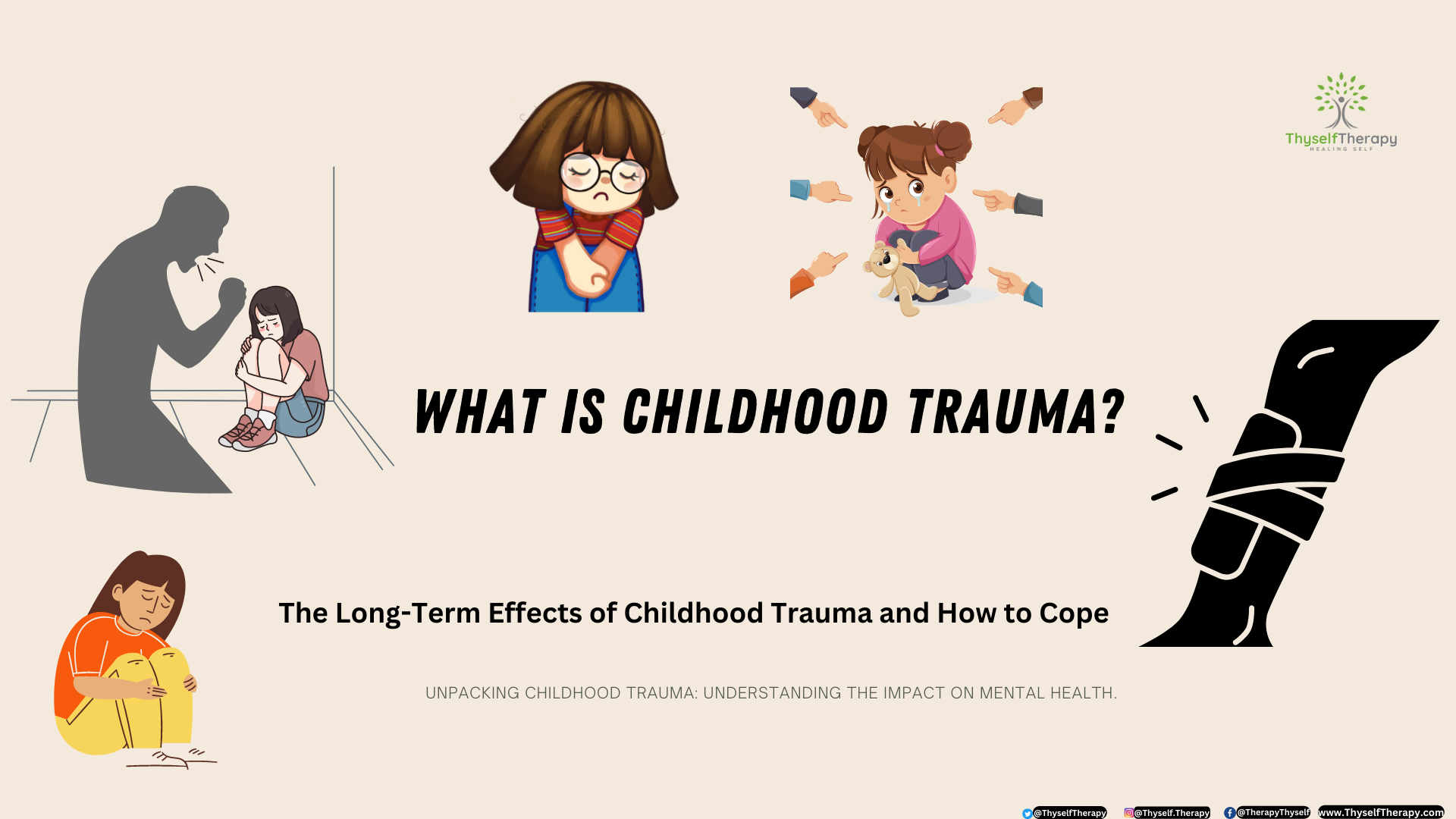Effective Codependency Treatment: Rediscover Your Independence and Find Freedom
Codependence Treatment Options
How do you break codependency?
Breaking codependency involves recognizing and changing behavior patterns and thinking that enable codependent behavior. Here are a few steps that can be taken to break codependency:
-
Identifying codependent behaviors:
The first step toward overcoming codependency is realizing the thought and action patterns that feed into it. One way to do this is to become aware of supporting actions like ignoring one’s own needs in favour of those of others or taking on the burdens of others.
-
Setting boundaries:
Overcoming codependency includes setting healthy limits and saying “no” to requests or demands that aren’t in one’s best interest—setting reasonable goals for oneself and others is crucial.
-
Improving self-esteem:
Codependents’ enabling behaviour is typically rooted in their insecurities about their worth. Breaking codependency can be aided by working on one’s self-worth through counselling, self-care, and personal development. Improve self-awareness and self-esteem.
-
Developing independence:
One of the keys to overcoming codependency is teaching oneself to rely on oneself for happiness and success. Self-improvement can take the form of engaging in one’s pursuits, developing meaningful bonds with others, and gaining confidence in one’s worth.
-
Seeking professional help:
Recognizing the need for professional assistance when attempting to break codependent patterns is an acknowledgment of the difficulty of doing so. Breaking free from codependency can be challenging, but therapy, support groups, and other services can help.
-
Practice assertiveness
-
Focus on personal growth and recovery
-
Develop a support network
-
Cultivate healthy relationships
It takes time and works to break codependent behaviours, but it is possible to do so and develop better, more meaningful relationships with the correct support system in place.
Best Ways to Treat Codependency
Interventions That Work Best for Codependency
Codependency may be addressed alone or with professional help, but it’s easier to get to the bottom of things if you have someone you trust by your side as you go through it.
Learning about codependency is the first step in overcoming it. Plenty of books, publications, and articles cover the subject so that you may learn more about your biases and the general culture.
Staying sober (and urging your spouse to do the same), attending talk therapy (either group or individual), and relocating to a different location where you are not responsible for another person’s well-being are all examples of behaviour modifications that can have a good impact.
Treatment Options
As codependency can be complex, seeking professional help is often an important step in recovery. Various therapeutic approaches focus on breaking free from established patterns and establishing healthier boundaries within relationships. These may include individual counselling sessions exploring underlying issues such as self-esteem, attachment styles, and communication dynamics; group therapy for peer support; or couples’ work if desired.
In addition to traditional psychotherapy forms, various supports are available through online forums and communities dedicated to codependent recovery. Within these spaces, individuals can access resources such as self-help books, articles, videos, and podcasts – all tailored toward understanding this condition more deeply while connecting with others who have faced similar struggles.
Regardless of the chosen route, it is important to remember that no one needs to go through the process alone. Access to specialist guidance and the right supportive environment can make all the difference when taking steps toward reclaiming autonomy over life choices and decisions. Working with an experienced therapist or counsellor makes it possible to uncover existing blocks while discovering new pathways based on healthy foundations in the future.
With greater insight into oneself comes the opportunity to move away from past patterns and create space for meaningful connections founded upon mutual respect and understanding instead. Through consistent effort and commitment, those affected by codependency can build fulfilling relationships at home or work, ultimately leading them closer to true freedom.
Cognitive Behavioral Therapy (Cbt)
Cognitive Behavioral Therapy (CBT) is a type of psychotherapy that focuses on learning to identify and change negative thinking patterns, which can lead to maladaptive behaviours. This approach has been successfully utilized in treating individuals with codependency issues. It allows them to gain insight into the underlying causes of their behaviour while also developing skills for managing difficult emotions in healthier ways. CBT helps people become more aware of their thoughts and feelings, recognizing when they are caught in unhealthy relationships or engaging in self-defeating behaviours.
To effectively implement this treatment method, the therapist and the client must work together closely during each session. The therapist will provide guidance and support throughout the process by helping the client develop strategies for recognizing and challenging unhelpful thought patterns and setting realistic goals for future progress. Additionally, clients should be encouraged to practice mindfulness techniques such as deep breathing exercises or progressive muscle relaxation to better regulate their emotional state before responding impulsively.
Cognitive behavioural therapy aims to help those affected by codependence build a strong sense of personal autonomy through understanding themselves better, identifying healthy coping mechanisms, and establishing clear boundaries within relationships – all essential components towards leading a balanced life free from toxic influences. Through consistent effort over time, those who struggle with codependency have the potential to live lives full of joy and fulfilment without sacrificing their well-being along the way. As these changes occur gradually rather than immediately, patience is an invaluable attribute needed throughout this journey toward recovery.
Transitioning now into dialectical behaviour therapy (DBT), another evidence-based intervention shown to be effective in addressing codependency issues…
Dialectical Behavior Therapy (Dbt)
Dialectical Behavior Therapy (DBT) is a form of psychotherapy that has proven effective in treating codependency issues. At its core, DBT focuses on helping individuals identify and modify maladaptive behavior while also teaching them strategies for regulating their emotions more effectively. This approach aims to increase self-acceptance and autonomy while reducing the need to rely on unhealthy relationships or behaviors as coping mechanisms.
For example, Susan: After years of struggling with emptiness and lack of control over her life, she turned to substance abuse and other destructive habits to fill the void within her. Through individual counselling sessions with her therapist using DBT techniques such as mindfulness practice, distress tolerance skills training, interpersonal effectiveness coaching, emotion regulation exercises, and dialectical thought processes for problem-solving -Susan could develop insight into why these tendencies had become so entrenched in her daily life. As she worked through each module in therapy, Susan gained a greater understanding of taking personal responsibility for her thoughts and actions while still validating herself during challenging times.
In addition to individualized treatment plans tailored towards each client’s specific needs, group settings can also be implemented alongside one-on-one therapy when working with those suffering from codependent issues. These support groups provide members with safe spaces where they can receive feedback from others about their progress without fear of judgment or criticism. This sense of community encourages participants to share openly about what they have learned thus far along their journey towards recovery – allowing everyone involved to benefit from hearing diverse perspectives, further promoting collective healing among all who participate.
Through continued dedication and commitment by clients and therapists alike, DBT provides those affected by codependency with invaluable tools for establishing healthier psychological boundaries throughout various relationships moving forward. With consistent effort over time, individuals have the potential to break away from limiting patterns that no longer serve them well to lead lives full of meaning and purpose instead. From here, we move on to acceptance & commitment therapy (ACT), another evidence-based intervention used widely today.
Acceptance And Commitment Therapy (Act)
Acceptance and Commitment Therapy (ACT) is an evidence-based approach to treating codependency that focuses on helping individuals create a life worth living. This type of therapy emphasizes the importance of learning to accept various aspects of one’s reality while encouraging one to commit to action toward meaningful goals or values. Through its six core processes, ACT helps individuals cultivate psychological flexibility, allowing for greater insight into personal triggers and improved regulation of emotions to make healthier decisions moving forward.
The first step in ACC involves developing awareness around current thoughts, feelings, sensations, and behaviors without judgment; simply acknowledging what is present at any given moment within the self. This process promotes acceptance through mindful observation rather than attempting to suppress or avoid difficult experiences altogether. Step two then shifts focus towards identifying value-driven goals based on individual principles such as compassion, integrity, responsibility, etc., with intentionality being placed upon committing fully from start to finish once these objectives have been set forth.
In addition to clarifying purposeful direction throughout this journey, participants are encouraged to learn more about their patterns regarding hindering progress along the way– allowing for a greater understanding of why certain obstacles may present themselves repeatedly. With this newfound knowledge comes an increased capacity for making conscious choices even amidst adversity – leading clients further down the path towards transforming maladaptive habits into productive ones instead.
Finally, by incorporating experiential exercises such as visualization techniques and creative problem-solving activities alongside traditional talk therapy methods -clinicians can assist those suffering from codependency in further strengthening their internal strengths necessary for sustained recovery over time. We discuss practical self-help strategies that can be used independently or alongside professional interventions.
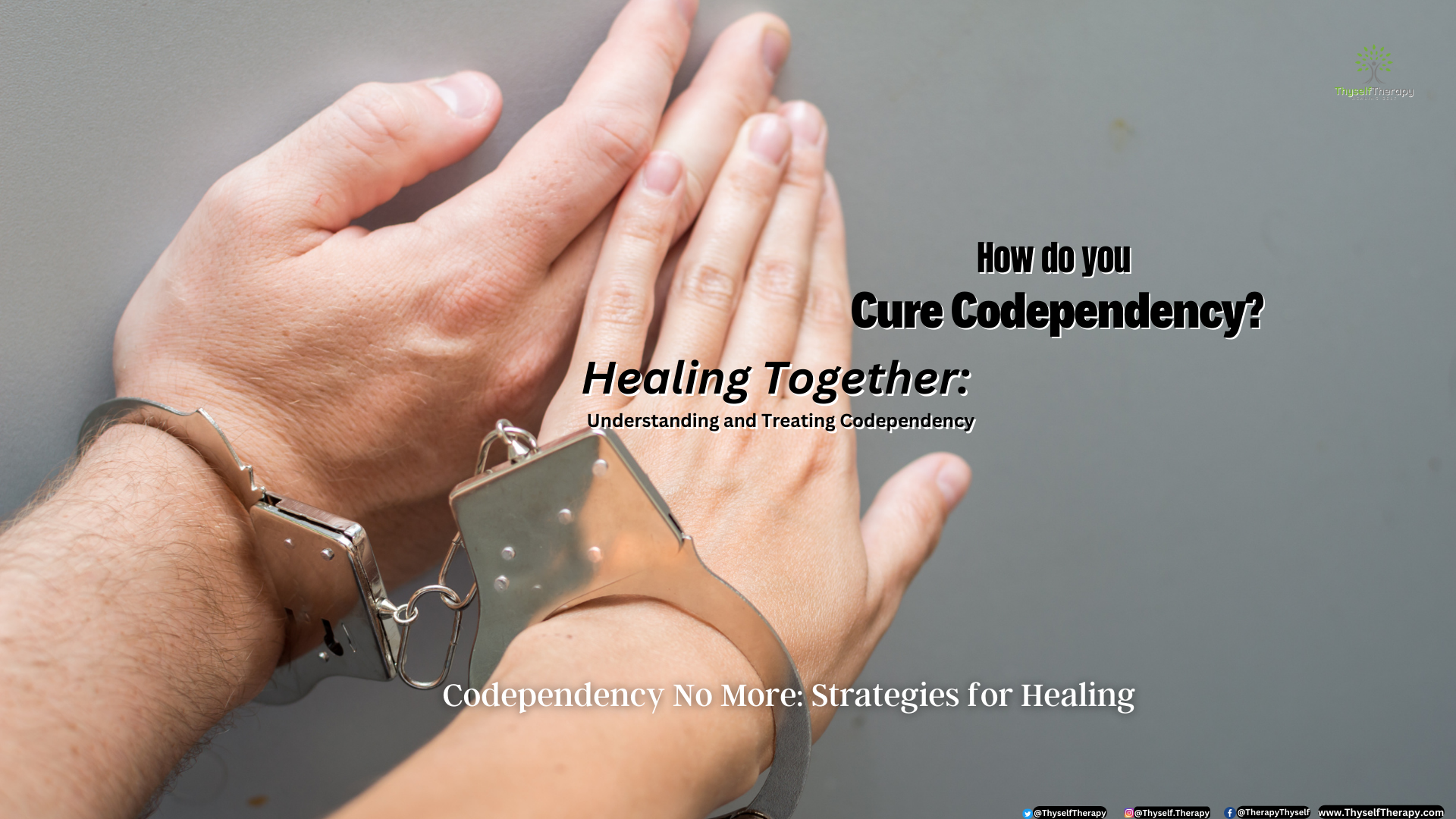
Self-Help Strategies For Overcoming Codependency
Tackling codependency can feel daunting, but with the right tools and strategies, progress on this journey is possible. Self-help techniques are an effective way for individuals to begin making positive changes in their life without professional intervention. As such, we will explore various approaches to be used as one enters into recovery from codependency.
The first step towards gaining control over our lives is developing greater self-awareness: taking time daily to check in with ourselves emotionally and physically to understand better which areas of our lives may need more attention or support. This could involve journaling about thoughts, feelings, and experiences, meditating regularly, or simply going through each day, being mindful of how different choices affect us internally. Additionally, engaging in activities we enjoy– alone or with others –can help foster personal growth while increasing our capacity for joy.
In addition to cultivating awareness around internal states and external environments, identifying core values is another essential element of overcoming codependency. Taking inventory of what matters most to us allows us to set meaningful goals based on these principles, providing direction throughout this process. Such intentions should include short-term objectives (i.e., learning to say no) and long-range aspirations (i.e., creating healthier relationships). Doing so helps keeps us motivated during difficult times by reminding us why we’re putting forth effort in the first place – serving as a constant source of inspiration when challenges arise.
Finally, utilizing healthy coping skills whenever necessary is paramount in dealing with triggers associated with past trauma or current stressors. Whether it’s a physical activity like running/yoga/dancing, artistic endeavors such as painting/drawing/writing, or even deep breathing exercises— having go-to practices that allow us to take care of ourselves emotionally can prove invaluable when navigating through challenging times ahead. With these methods now at hand, nothing stops anyone from moving forward on their path toward recovery from codependency today!
How To Support A Loved One Struggling With Codependency
Supporting a loved one on their journey toward overcoming codependency can be rewarding and challenging. As such, it is important to understand the various approaches that can be used to provide meaningful assistance when needed.
The first step in supporting someone struggling with this condition is listening actively. This means taking time out of our lives to hear the other person’s words without judgment or interruption. Allowing them to express themselves openly while providing unconditional support during these conversations creates an environment free from shame – helping us better connect with those we care about while showing respect for their process.
In addition, offering practical help whenever possible can also go a long way. Whether it’s driving them to therapy appointments, attending group meetings together, or simply going out for coffee/tea – small gestures can make all the difference by reminding someone they are not alone on this path towards recovery. Doing so helps build trust between the parties involved, which often gets lost during moments of distress associated with codependent behavior patterns in the past.
Finally, educating oneself about this topic is also essential – especially if one does not have experience dealing with it now. Taking courses related to understanding codependency, reading books written by experts in the field, or even talking with professionals trained specifically in addressing this issue all allow us to learn how best to navigate through these situations moving forward, which ultimately increases our ability to serve those closest to us more effectively over time.
By using these strategies – family members become empowered to play an instrumental role in aiding their loved ones suffering from codependency throughout each stage of recovery ahead!
The Role Of Family In Supporting Recovery From Codependency
The role of the family in supporting recovery from codependency is a critical factor for success. With the right approach and understanding, family members can provide immense emotional support to those struggling with this condition.
- Firstly, it is important to realize that everyone’s journey toward overcoming codependency will differ depending on their circumstances. As such, being open-minded about what works best for the other person and allowing them to take the lead when necessary creates an environment free from judgment – helping us better connect with those we care about while showing respect for their unique process.
- Secondly, providing practical help whenever possible is also beneficial. Whether it’s taking turns attending therapy appointments, going out for coffee/tea together, or simply having someone to talk to – small gestures can make all the difference by reminding them they are not alone on this path toward healing. Doing so helps build trust between the parties involved, which often gets lost during moments of distress associated with codependent behaviour patterns in the past.
- Finally, educating oneself about this topic is also essential – especially if one does not have experience dealing with it now. Taking courses related to understanding codependency, reading books written by experts in the field, or even talking with professionals trained specifically in addressing this issue all allow us to learn how best to navigate through these situations moving forward, which ultimately increases our ability to serve those closest to us, more effectively over time.
By employing these strategies – families become empowered to play an invaluable role in aiding their loved ones suffering from codependency throughout each stage of recovery ahead!
When To Seek Professional Help For Codependency
Recognizing when to seek professional help for codependency can be a difficult decision. With the right guidance and resources, however, individuals struggling with this condition can find comfort in knowing that there are options available to them that can provide much-needed support along their journey toward recovery.
The first step to take is acknowledging the need for assistance. This often means having honest conversations with those closest to us about what we’re experiencing and how they can best help us in the right direction moving forward. Taking these steps helps create an environment where it becomes easier to reach out for more intensive forms of treatment if needed without feeling ashamed or embarrassed.
Once a decision has been made to pursue additional methods of support – seeking out professionals trained specifically in addressing issues related to codependency could prove beneficial. This may include consulting with licensed counsellors, engaging in group therapy sessions, or even attending specialized workshops designed around helping people learn better-coping skills, amongst other things. Doing so gives individuals access to tools necessary for understanding why certain behaviours have occurred in the past and providing new strategies for managing future challenges associated with this condition simultaneously.
Overall, deciding when it is appropriate to turn towards external sources for aid regarding codependency requires courage and humility – yet taking such measures allows one to open up doors leading down paths full of potential growth!
Long-Term Outlook For Those Recovering From Codependency
Recovering from codependency is often a long and difficult process, but it can be incredibly rewarding with the right support. Depending on how they approach their recovery journey, those who have experienced this disorder will likely benefit in various ways.
The first step towards successfully managing codependent behaviour is typically centred around understanding the underlying cause for these tendencies. By doing so, individuals can develop greater insight into why certain patterns might exist – making them better equipped to identify and deal with potential triggers in future scenarios.
In addition, recognizing one’s needs and learning healthy methods for expressing them is another critical factor when attempting to overcome issues related to codependency. This may include forming healthier relationships through appropriate boundaries and engaging in activities that bring about feelings of self-worth and satisfaction, such as volunteering or spending time outdoors.
With adequate support from qualified professionals, those affected by this form of psychological distress can potentially lead lives free from fear and anxiety while simultaneously taking control over their destinies in meaningful ways. Ultimately, overcoming codependency requires dedication, hard work, and patience; however, the rewards can be life-changing with sufficient effort.
Benefits Of Counseling for codependency
Access to the right counselling can bring many benefits when addressing codependency. Working with an experienced therapist allows individuals to explore their lives deeper and gain greater insight into how they interact with others in shared relationships. With this newfound understanding comes the potential for positive mental health changes that can have far-reaching effects over time.
The process of counselling also offers invaluable emotional support along the way. Having someone who is both nonjudgmental and impartial provides an essential safety net during difficult times – allowing those affected by codependency to feel heard and understood without fear or shame. This type of therapeutic relationship allows for honest exploration within a safe space which makes genuine healing possible at last.
In addition to receiving guidance from a professional counsellor, there are other advantages, such as learning new communication techniques that help break free from established patterns while opening up opportunities for healthier connections. As progress is made toward finding more balance within life’s choices, lasting change becomes achievable, enabling individuals to regain control of their identity again.
As well as helping people reconnect internally, counselling sessions provide helpful tools and strategies tailored towards taking practical steps forward instead. Through consistent effort and commitment, these actionable plans become easier to implement over time – leading toward successful outcomes where true freedom awaits. And so, by using specialist advice combined with increased self-awareness, it becomes possible to start recognizing what boundaries need setting going forwards – paving the way for meaningful relationships based upon mutual respect and understanding ahead.
Learning To Set Boundaries
Setting boundaries is essential to developing healthy relationships and cultivating a sense of self-worth. It involves recognizing where our preferences, values and beliefs end and those of others begin – creating the necessary space to ensure everyone’s needs are met equally. This can often be challenging for those affected by codependency, as they may have unknowingly adopted unhealthy habits that must be addressed first.
Fortunately, counselling sessions provide invaluable guidance on establishing appropriate limits with empathy and respect – helping individuals learn more about their true identity. This journey of rediscovery allows for meaningful conversations that lead toward understanding when setting personal boundaries too. By taking the time to consider what feels comfortable or uncomfortable during interactions, people can then start making informed decisions based on positive choices instead.
Boundary setting also requires consistent effort from both parties involved for desired outcomes to be achieved successfully. This means being honest without judgment while allowing room for negotiation if needed. Although it might take some practice at first, having clear expectations makes communication easier over time – leading to healthier relationships in the future where mutual trust takes precedence above all else.
The key here is learning how to express oneself assertively yet respectfully – which encourages open dialogue between everyone concerned instead of relying solely on assumptions alone. With ongoing support through counselling, these important life skills can soon become second nature – providing individuals with greater autonomy and choice going forwards than before. And so, with patience and dedication, it’s possible to make real progress towards creating lasting bonds built upon mutual respect moving forward.
Building Healthy Relationships
Building healthy relationships is essential to cultivating a sense of well-being for those affected by codependency. This involves learning to communicate effectively, taking responsibility for one’s feelings, and establishing boundaries within all interactions – creating the necessary space to ensure everyone’s needs are met equally.
Healthy communication is key here as it encourages open dialogue between both parties involved – leading towards understanding when setting personal boundaries too. By taking the time to consider what feels comfortable or uncomfortable during conversations, people can then start making informed decisions based on positive choices instead. It also requires consistent effort from each concerned if desired outcomes are to be achieved successfully – which means being honest without judgment while allowing room for negotiation if needed.
It might take some practice at first, but with ongoing support through counselling, these important relationship skills can soon become second nature – helping individuals learn more about their true identity. And so, with patience and dedication, it’s possible to make real progress towards creating lasting bonds built upon mutual respect moving forward.
To maintain such meaningful connections, though, self-care should also be considered as this allows individuals greater autonomy and choice going forwards than before – providing them with invaluable guidance on establishing appropriate limits with empathy and respect. With that in mind, let us explore ways to foster sustainable self-care habits.
Ways To Foster Self-Care
When cultivating healthy self-care habits, many activities can help individuals take control of their emotional well-being. From setting aside dedicated time for relaxation to trying out new hobbies and interests – these strategies provide a sense of empowerment within the day-to-day. It’s also important to remember here that everyone is different in how they like to practice self-care, so taking some time to work out what works best for you personally will go a long way toward creating lasting change over time.
For instance, some people might find journaling or yoga beneficial. In contrast, others may prefer going for walks or having an evening bath – whatever your preference, though, regular self-care activities should be part of your daily routine if possible as this helps strengthen resilience during challenging periods further down the line too—additionally, doing something kind for yourself each day (no matter how small), such as making breakfast or reading a chapter from a book, could make all the difference in managing stress levels effectively moving forwards.
It’s also worth noting here that being aware of one’s own needs is paramount – especially when faced with difficult emotions, which can often cause feelings of overwhelm and anxiety. Access to resources such as counselling sessions and support groups can assist greatly in developing coping mechanisms around distressful situations – giving individuals the tools to navigate life through times of distress more successfully than before.
By engaging in meaningful conversations on topics such as codependency, we gain greater insight into our own experiences and allow ourselves room to grow by learning constructive techniques designed specifically with us in mind – ultimately leading us closer towards healing any unresolved issues along the journey ahead. With that said, let us now move on to exploring ways in which we can cope better with emotional pain…
How To Cope With Emotional Pain
As we go through life, emotional pain will inevitably come our way. To cope with such feelings of distress and overwhelm, however, there are several strategies we can employ to help us manage them better – no matter how difficult the situation might seem at times.
One approach could be to practice various relaxation techniques when feeling overwhelmed, from deep breathing exercises to cognitive reframing techniques or even mindfulness activities – these methods provide a sense of calmness which in turn helps reduce stress levels and gives individuals a sense of control within their own lives. Additionally, connecting with supportive friends or family members during this time may assist greatly here by providing an outlet for any feelings you’d like to express while receiving comfort and reassurance throughout the process.
When it comes to pain management, though, it’s important not to focus solely on yourself but take your mental health into account holistically too. This means engaging in self-care practices designed specifically around improving overall well-being (such as getting plenty of restful sleep, exercise, and eating nutritious food) whilst also taking part in leisurely activities which bring joy – whether that’s painting classes or going for walks outside nature – whatever feels best for you should always be prioritized over everything else.
Ultimately, learning more about different coping strategies available can make all the difference when facing challenging emotions head-on – enabling us to navigate life more confidently than before by equipping ourselves with the necessary skills along the journey ahead. With that said, let us now look further into avoiding codependent behaviours…
Avoiding Codependent Behaviors
Codependency can be a difficult habit to break, but it is possible with effort and determination. Avoiding codependent behaviours requires being aware of how one’s actions may affect others and learning to set healthy boundaries to protect oneself from being overly invested in someone else’s problems or needs. This means taking the time to understand your triggers and what causes you distress to manage them better moving forward. Additionally, developing an understanding of basic communication techniques (such as active listening) will also help by allowing individuals to express their thoughts and feelings more effectively when engaging with those around them.
Overcoming codependency involves increasing self-awareness and acceptance for who we are at our core – this includes focusing on building up positive qualities within ourselves such as confidence, resilience, empathy, trustworthiness etc., whilst working through any underlying issues which might have contributed towards this behaviour in the first place (e.g., past traumas). Having supportive people around during this process makes all the difference; whether family members or friends, online and offline support systems can assist greatly throughout the recovery journey.
Finally, reconnecting with activities that bring joy into our lives is highly beneficial here. Doing things like spending quality time outdoors or engaging in creative projects provides much-needed distraction away from unhealthy patterns of thinking/behaving, thus aiding us further towards healthier relationships. Taking regular breaks from technology could also prove helpful since overreliance on screens has been linked to increased stress, anxiety, and depression – something worth noting if struggling emotionally today.
It takes courage to face life head-on, but ultimately, it’s worth every step that is taken along the way toward personal growth – so why not start now? Self-care should always come first when trying to stay afloat during challenging times; after all, no matter how hard things might seem, there is still hope out there waiting for those willing to take that leap of faith!

